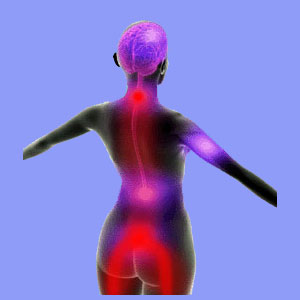
Sciatica exercises are performed daily by many patients who are affected by radiculopathy conditions in their lower back and legs. Some patients choose to do these fitness activities by themselves, while others are prescribed specific exercises by their doctor, chiropractor or physical therapist. While exercise is one of the most common and popular treatment options, it is not exactly clear what the intended purpose of the modality is and how it is expected to effectively treat or cure a sciatica pain syndrome.
This resource section will investigate exercise therapy as a treatment for sciatic nerve syndromes. We will detail the benefits and limitations of sciatica exercises, as well as profile many of the most common forms in separate focused articles.
What are Sciatica Exercises?
Exercises specifically prescribed for sciatic nerve pain are typically a combination of stretches and targeted physical activities designed to strengthen the postural muscles, increase flexibility and broaden the range of motion in the lumbar spine and legs. These exercises are one of the first lines of defense against sciatica symptoms and are usually recommended as part of the initial conservative treatment plan.
Exercise therapy, also known as physical therapy, is an important part of rehabilitating injuries and recovering from surgery. However, it has not proven itself to be very useful in dealing with chronic sciatica pain. This is no surprise, since sciatica often scoffs at the traditional medical approach to care and continues unchecked by medical treatment for many years on end. The major exceptions to this rule include scenarios in which the actual source of pain resides in the soft tissues, such as in the case of piriformis syndrome or muscle imbalances.
Discussions on PT and Exercise Therapy
The following reports provide a detailed look at many specific forms of exercises for sciatica:
Tennis sciatica can occur from playing competitively or casually.
Sciatica and sports are inherently connected due to injury and degeneration that is so common among serious athletes.
Yoga for sciatica provides targeted therapy and also demonstrates mindbody benefits.
Tai chi for sciatica is a gentle full body fitness program that can help minimize pain.
Bicycling sciatica is a horrible consequence of this seated sports pastime.
Walking for sciatica is the most basic of all exercises for chronic pain.
Pilates for sciatica focuses on the core of the body and can help develop better overall health and wellness.
Swimming for sciatica is my own personal recommendation when it comes to exercise therapy. Is swimming good for sciatica? I can definitively answer affirmatively in almost every circumstance.
Sciatica and weight lifting are related by the propensity for injury common to resistance training.
Sciatica running can be a treatment or a cause for symptoms.
Golf sciatica might threaten enjoyment of the game due to acute attacks.
I wrote a great book detailing my own exercise and stretching program which can be found as part of our pain relief program.
Purpose of Sciatica Exercises
Exercise is typically prescribed in the hope of accomplishing some good. Exactly how this good will take place is a mystery to the patient and often the doctor, as well. Remember, the most commonly diagnosed causes of sciatica include herniated discs, degenerative disc disease and spinal osteoarthritis. They exist inside the spinal canal and will not change simply because the surrounding musculature is enjoying a vigorous workout.
How will exercise resolve any of these structural spinal conditions?
Exercise will increase muscular strength and flexibility, but to what end?
If the muscles are not the source of pain, then how will having amazingly strong muscles help the back pain condition?
The old notion of stronger muscles helping to support the spine and maintain better posture is nonsense when discussing a sciatica condition, since the pain is purportedly due to structural compression of a nerve root. This suspected causation will not be relieved by the strongest back muscles in the world.
Sciatica Exercises for Ischemia
Doctors generally ignore the diagnosis of ischemia, when it comes to sciatica, despite it being one of the more common sources of chronic symptoms. Despite adamantly ignoring this mindbody process, many physicians continue to prescribe sciatica treatments, such as exercise, which will successfully treat ischemia, but not structural pain. How does this make sense?
We already established that exercise will not change the spinal structures, nor take pressure off any diagnosed pinched nerve. However, it is still illogically prescribed for structural diagnoses every day.
Exercise will help to temporarily relieve ischemia-related pain, since it increases circulation and cellular oxygenation. Since oxygen deprivation is often the actual process enacting the painful symptoms, exercise works very well for ischemic pain conditions, such as sciatica or general back pain. It is just amazing, and not quite a coincidence, that doctors do not openly acknowledge ischemia as source of pain, yet design a conservative treatment program as if ischemia were indeed the diagnosed causation of symptoms.
Exercise Therapy for Sciatic Nerve Pain
Exercise is a wonderful part of life and is crucial to overall health and wellbeing. However, it is not generally a successful cure for any type of chronic pain. Patients with actual structurally-enacted nerve symptoms are unlikely to see many positive results from exercise therapy, while misdiagnosed patients are likely to enjoy temporary relief, especially from certain soft tissue sources of pain. If you do see really good results from exercise therapy and have been diagnosed with a disc condition or spondylosis, there is a very good chance that your pain has been misdiagnosed, as well.
As a certified fitness trainer and professional martial artist, I have a bit of experience with exercise therapy. Regardless, I was instructed to do all these sciatica exercises throughout my long and arduous struggle with chronic pain. Whenever I would talk to my doctor about the purpose of the exercise, I got some half non-sensical answer which really made me very suspicious of the entire treatment agenda which was recommended to me.
My pain was blamed (mistakenly, I might add) on degenerative disc disease and 2 herniated lumbar discs. I always asked my doctor what exactly was causing the pain and he explained that these discs were pressing on spinal nerve roots, eliciting symptoms. I then asked him how improving the strength of my back muscles would help this at all and he basically got this blank look on his face and tried to find the logic in it himself. It is worth noting that I am, and always have been, in top physical form; competitive form. His mouth began to spout rubbish which contained no logic and a lot of unintelligible phrases such as “ummm”, “you know” and “sorta like this”.
Good job, doc. No wonder I fired you ages ago.
Efficacy of Sciatica Exercises
In summary, I think exercise is a key to a happy and healthy life. I recommend it to all, regardless of fitness level. However, as mentioned before, I do not endorse it as a sciatica therapy unto itself. Exercise therapy is illogical from a diagnostic standpoint and when it works, this basically reinforces the fact that the diagnosis is usually wrong.
Piriformis syndrome, ischemia, muscular imbalances, fibromyalgia and other sources of pseudo-sciatica might respond very well to exercise therapy, which is logical. However, if the source process is a spinal nerve issue, then please explain how doing any form of exercise will provide a cure. Doctors? Any takers?
What it really comes down to is justification and paper trails. In order to gain coverage of more drastic treatment, the practitioner will often have to show a history of failed conservative care.
Sciatica exercise is the least risky and most universally recommended, so it is basically prescribed without semblance of reason just to get a health insurance plan to cover an expected surgical event in the near future. More medical economics at play.






